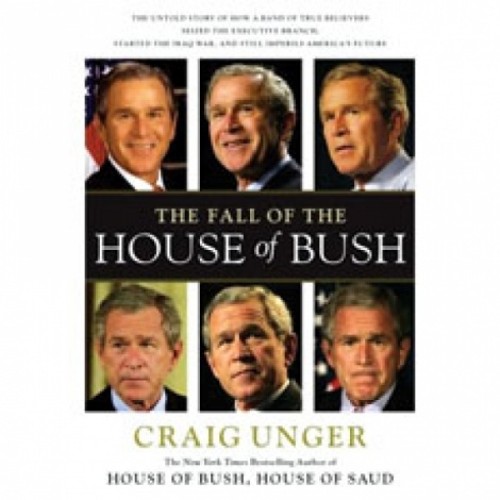Books | Neocon Artists: The Fall of the House of Bush traces the origins of a disastrous foreign policy
By Chris PepusUnger traces the origins of Bush’s foreign policy to the 1970s, when prominent bureaucrats and writers gathered around such converts to conservatism as Irving Kristol and Albert Wohlstetter. The neocons scored their first big success in 1976, when two of their allies in President Ford’s administration, Donald Rumsfeld and Dick Cheney, created a group outside the CIA to assess the Soviet threat. That panel, dubbed Team B, was staffed by neocon worthies. A Wohlstetter protege named Paul Wolfowitz served as an adviser.
Team B concluded that the CIA had vastly underestimated Soviet power. It was an imaginative assessment, given that the economy of the USSR was crippled and its military infrastructure was suffering—as CIA officers pointed out. The panel held, for instance, that the USSR had probably deployed a top-secret antisubmarine system, even though U.S. intelligence had found no credible evidence of such a program. As Unger writes, “The absence of evidence, [Team B] reasoned, merely proved how secretive the Soviets were!” It was a bold pre-emptive attack on fact and logic.
Team B’s creativity went unrewarded in the short term, but Ronald Reagan would use the panel’s report to justify his enormous military buildup (and consequent budget deficits) in the 1980s; in the ’90s, Team B alumni and followers took aim at the Clinton administration’s Middle East policy. In 1996, a group of neocons led by Richard Perle produced a policy statement, “A Clean Break,” that prescribed military action to remove anti-Israel governments like Saddam Hussein’s. When George W. Bush entered office—flanked by Cheney, Rumsfeld and Wolfowitz—the report became a blueprint for war.
Describing three decades of right-wing gambits, Unger paints a stunning portrait of arrogance and duplicity. However, he underplays the importance of oil-industry leaders, including his previous subjects, the Saudis. Journalist Greg Palast writes about a 2000 report by the Joint Task Force on Petroleum, cosponsored by the James A. Baker III Institute. The panel, which included oil execs as well as foreign-policy specialists, complained that Iraq was a “swing producer” of oil, with a propensity to “manipulate oil markets.” The task force recommended “an immediate policy review toward Iraq,” including military options. Palast says Cheney got the report early in 2001, and its economic considerations may have provided the strongest impetus for invasion.
Likewise, the Saudis have played a large role in developing Bush’s aggressive approach toward Iran and Shiite Muslims throughout the Middle East (Saudi rulers are Sunnis). Bush and his aides choose to blame Iran for the disaster in Iraq, even though it’s the Sunnis who’ve inflicted the majority of casualties on U.S. troops. The New Yorker’s Seymour Hersh has reported that the administration has joined the Saudis in providing clandestine support to Sunni extremists in Lebanon and Syria, including some with ideological affinities to Al Qaeda. It’s an astonishing policy, completely at odds with the lessons of 9/11 and battlefield realities in Iraq. The administration’s close cooperation with Saudi royals demonstrates that there are limits to the influence of the neocons, many of whom advocate regime change in Saudi Arabia.
Intensifying the administration’s tilt toward the Sunnis, Bush and Cheney are now contemplating air strikes against Iran, citing that country’s nuclear potential. But, according to an intelligence estimate released Dec. 3, Iran shut down its atomic weapons program in 2003. That assessment appears to have done little to deter the administration’s drive toward confrontation. In response to the new intelligence estimate, George W. Bush asked, “What’s to say they couldn’t start another covert nuclear weapons program?”
The Fall of the House of Bush By Craig Unger. Scribner, $27, Hardback, 448 pp.



